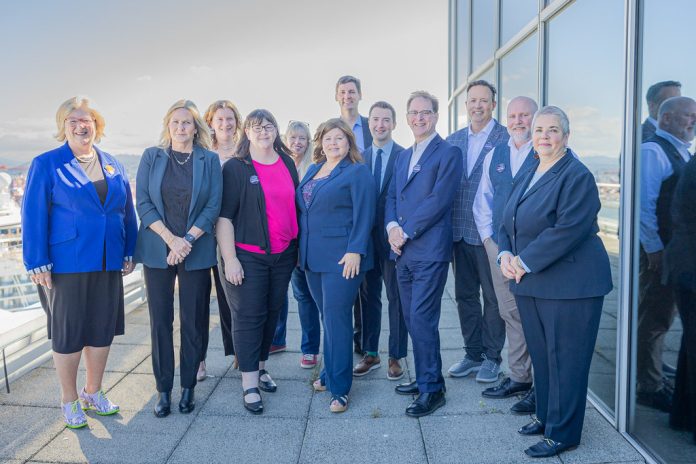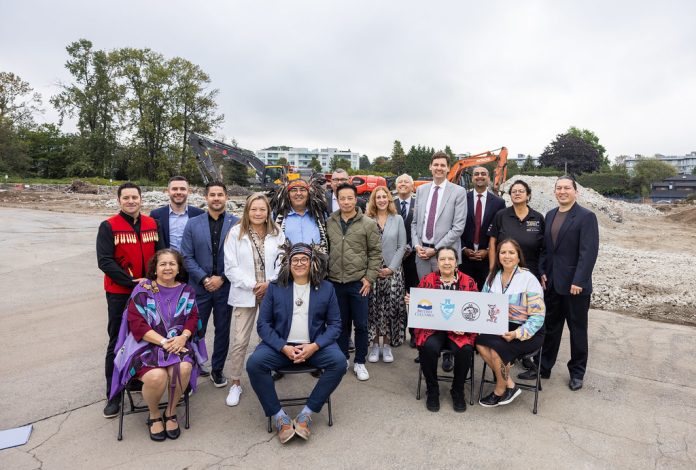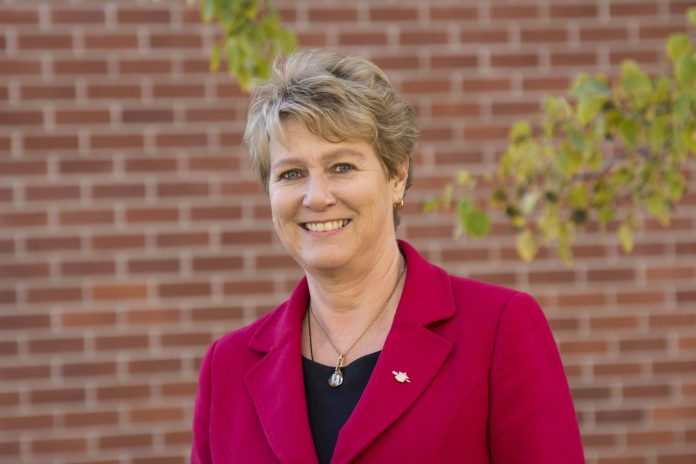Thousands of first-time home buyers will have the opportunity to purchase a home at an initial 40% below market value at the Heather Lands in Vancouver, made possible through an innovative financing initiative envisioned by xʷməθkʷəy̓əm (Musqueam), Sḵwx̱wú7mesh (Squamish), and səlilwətaɬ (Tsleil-Waututh) (MST) Nations delivered in partnership with the Province.
“The dream of home ownership has been out of reach for too many, for too long, especially here in Vancouver,” said Premier David Eby. “This innovative initiative – delivered in partnership with MST Nations – will help thousands of middle-class people break into the housing market, while allowing government to recoup its financial contribution. This means more families living and working here can put down roots, while also addressing labour challenges and driving our economy forward.”
The Attainable Housing Initiative (AHI or Initiative) will see approximately 2,600 homes being built at the Heather Lands, an 8.5-hectare (21 acres) site located between West 33rd Avenue and West 37th Avenue at Heather Street in Vancouver. The Initiative was proposed by the MST Nations as a meaningful way for the Nations to harness economic, cultural and social benefits from their land holdings by strategically partnering with other levels of government.
“Ten years ago, Musqueam, Squamish and Tsleil-Waututh signed groundbreaking agreements that led to our Nations working together to regain ownership of several properties within our shared territories,” said xʷməθkʷəy̓əm (Musqueam) Chief Wayne Sparrow. “This relationship has evolved, and we are proud to collectively introduce this new initiative that will ease the housing crisis faced by our members and the general public.”
The initiative will allow for studio, one-, two- and three-bedroom 99-year strata leasehold homes to be initially purchased and financed by middle-income earners at below-market prices through a 60/40 purchase financing arrangement.
The framework of the 60/40 purchase financing arrangement includes:
- A buyer owns the home, but initially finances and pays only 60% of the market price for the unit using a traditional real estate transaction (e.g., down payment and financing through a mortgage with the buyer’s financial institution).
- The Province initially finances and covers the remaining 40% of the market price with the land owner and developer.
- The 40% contribution is then repaid by the buyer to the Province either when the owner sells an AHI unit or after 25 years, from the purchase date, whichever comes first (further details in Backgrounder 2).
- A buyer under the Initiative only needs an initial 5% deposit (at pre-sale) on 60% of the initial market purchase price.
- AHI units will be sold as 99-year strata leaseholds on MST Nations-owned land.
- The Initiative and 60/40 purchase financing arrangement applies only to the original first-time purchase of the unit and not to secondary or subsequent purchase/sale transactions.
The partnership will include MST Nations providing the land and the Government of B.C. contributing up to $672 million, which is expected to be repaid by purchasers to the Province under the initiative, allowing the Province to reinvest returned funds into future provincial programs, which may include housing.
“This new MST collaboration is an innovative and distinctly Indigenous approach to development, that will make home ownership significantly more accessible to those who live in our shared territories,” said Sxwixwtn, Wilson Williams, Sḵwx̱wú7mesh Úxwumixw spokesperson and council member. “We are proud that the MST Nations can offer a unique solution to the affordable housing crisis now facing Vancouver.”
Since 2014, the Heather Lands site has been part of a joint venture between the MST Nations and Canada Lands Company, a self-financing, federal Crown corporation specializing in real estate and development. A comprehensive planning program of the site began in 2016, jointly overseen with the City of Vancouver’s planning department.
“As the host First Nations within Vancouver, we have always welcomed people to our shared territories, and in our culture being a good host matters,” said səlilwətaɬ (Tsleil-Waututh Nation) Chief Jen Thomas. “This initiative is our way of aligning our cultural values of caring for all the people that choose to live in our territories, while also delivering economic benefits to our communities and the next seven generations. We are all in this together and I think this is the start of something very special.”
Under the plan, prospective buyers could be able to register and confirm their eligibility as early as spring 2025. First-time homebuyers and people who do not own any property will be prioritized. If there are more eligible buyers than available AHI units, a randomized selection of eligible buyers will take place, with first-time homebuyers prioritized and first in line.
There will be strict rules and screening measures in place within the AHI to stop speculators from flipping properties and exploiting the initiative, and to stop ineligible buyers from participating. This includes provisions in place to stop presale flipping and deter the resale of AHI units within the first three years of ownership. (See details in Backgrounder 2.)
Eligibility:
- Buyers must have a total annual household income less than $131,950 (as of 2024) and net household assets less than $150,000, to be eligible for studio and one-bedroom leasehold homes.
- Buyers must have a total annual household income less than $191,910 (as of 2024) and net household assets less than $250,000, to be eligible for two-bedroom, or larger leasehold homes.
- Buyers must be a citizen or permanent resident of Canada.
- One buyer must have resided in B.C. for the past 24 months consecutively.
- Buyers must be at least 18 years old.
- Buyers must not own an interest in any other property anywhere else in the world at the time of purchase closing.
- Buyers must prequalify for a mortgage and must have the minimum pre-sale deposit of at least 5% of the value equal to 60% of the market purchase price.
- Use the home as the owner’s principal residence.
Construction of the Heather Lands AHI project is expected to begin in 2025. Unit prices will be determined at time of sale. If units were to be sold under current market conditions under this Initiative, examples of pricing using the 60/40 purchase financing arrangement could be as follows:
- Studio unit, market price $620,000, AHI buyer’s 60% private financing is $372,000, Province initially finances $248,000
- One bedroom, market price $850,000, AHI buyer’s 60% private financing is $510,000, Province initially finances $340,000
- Two bedrooms, market price $1,300,000, AHI buyer’s 60% private financing is $780,000, Province initially finances $520,000
- Three bedrooms, market price $1,500,000, AHI buyer’s 60% private financing is $900,000, Province initially finances $600,000
Working with the MST Nations on this Initiative is part of the Province’s ongoing actions to tackle the housing crisis and deliver more homes for people, quicker.
Since 2017, the Province has more than 84,000 homes delivered or underway. Recent strong actions taken to fix outdated zoning laws and crack down on speculators are expected to help deliver hundreds of thousands of more homes over the next decade.
Quotes:
Ravi Kahlon, Minister of Housing –
“For too long, speculators and investors were put ahead of first-time homebuyers living and working in Vancouver. This has driven up the cost of down payments and mortgages and pushed home ownership out of reach for too many. We jumped at the opportunity to partner with the MST Nations in this Initiative, and we’re going to keep working to put home ownership within reach and provide more affordable housing options for people.”
Murray Rankin, Minister of Indigenous Relations and Reconciliation –
“First Nations are important partners in tackling some of the biggest issues of our time, from climate change to housing, and Musqueam, Squamish and Tsleil-Waututh Nations are showing real leadership through the Heather Lands housing development. Not only will this benefit people of British Columbia and Vancouver, but it also creates a space for Indigenous art, architecture and design in Vancouver’s landscape, creating healthy communities and economic opportunities where we can all feel the benefits now and in the future.”
Ken Sim, mayor of Vancouver –
“The city welcomes the opportunity to work with the Province, the xʷməθkʷəy̓əm (Musqueam), Sḵwx̱wú7mesh (Squamish), and səlilwətaɬ (Tsleil-Waututh) Nations to explore possibilities to create vibrant, inclusive spaces that honour the past and bring positive impacts for all who call Vancouver home.”










